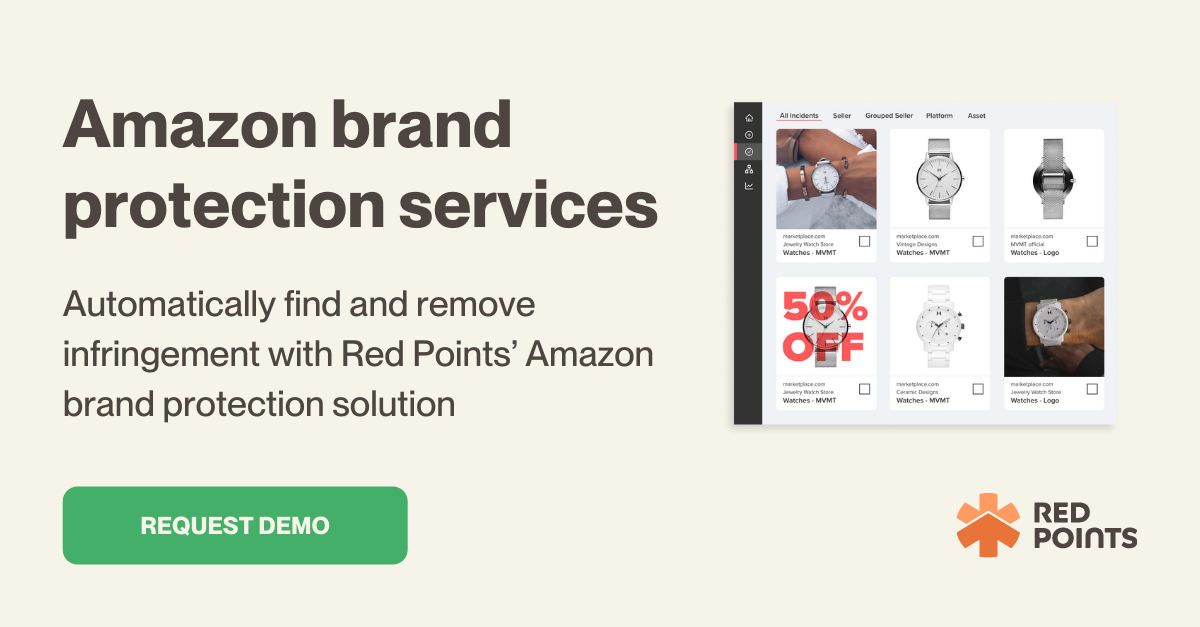It’s no secret that Amazon has grown to be the most popular online shopping app in the United States, while also rapidly growing its market share in many other countries around the world in recent years.
Yet, with the increasing popularity of Amazon, there has also been a rapid increase in fraudulent activity on the platform. From July 2020 through June 2021 alone, Amazon impersonators stole more than $27 million, increasing more than 500% from the same period the previous year.
We can expect various forms of scams and frauds to continue haunting Amazon, endangering both buyers and sellers on the platform. Meaning, that anyone looking to buy or sell on Amazon must be aware and vigilant of scammers and fraudsters that come in many different forms.
In this article, we’ll discuss how to identify scams and fraud attempts on Amazon, how to report these frauds, and how to protect yourself and your business from these scam attempts.
Without further ado, let us begin.
Why Amazon is targeted by fraudsters
The answer is pretty simple, at the moment, Amazon is the world’s largest ecommerce platform, with more than 6 million third-party sellers from all around the world, and more than one million are from the US alone.
More sellers (and more buyers) would simply translate to more opportunities for cybercriminals, fraudsters, and scammers, and this is what attracts them to the platform.
When discussing frauds on Amazon, it’s crucial to understand that Amazon is a customer-centered business, and the majority of its policies are designed in favor of the buyer. Meaning, that even if the fraud attempt is targeted at buyers, the seller/merchant can be penalized directly or indirectly (i.e., the cost of paying a professional to investigate the transaction) when the affected buyer files a complaint to Amazon or to the seller.
Different types of Amazon scams and frauds
In recent years, these fraud and scam attempts on Amazon have become increasingly sophisticated and come in various forms, targeting both merchants and consumers on the platform.
Below, we will discuss these different types of scam attempts:
1. Phishing attempts
Cybercriminals can attempt phishing or spoofing by pretending to be Amazon, for example, by sending emails with a domain name resembling Amazon.
The fraudster will typically ask the email recipient to provide their credentials over the email. (i.e., asking them to submit their Amazon account credentials on a fake login page)
Since the early days of Amazon, phishing scams are already very common due to the size of the platform and its number of users. However, these phishing attempts have become more and more sophisticated over the years, making them harder to detect and prevent.
2. Review scams
A seemingly harmless type of scam that can actually harm the overall shopping experience is for sellers to harm other merchants’ credibility by writing fake reviews or paying others to do so.
In practice, these fake reviews can confuse buyers and may significantly harm a store’s credibility. Some scammers may also go the extra mile to upvote the existing negative reviews (by clicking yes on the “was it helpful?” button) so the fake review will be seen by more users.
3. Failed delivery scam
This type of scam is common, not only on Amazon, but also on any ecommerce store or online marketplace where third party sellers engage buyers directly.
In a failed delivery scam, a buyer who has purchased a product from Amazon beforehand claims that the item they’ve purchased didn’t arrive (while in reality, it did) and asks for a refund.
Fortunately, with Amazon and merchants now using shipping methods with advanced tracking options, this type of scam has gradually been in decline.
Again, with Amazon often prioritizing customer-centric policies, disputes surrounding this type of scam are often settled in favor of the buyer.
4. Credit card fraud
Buyers may illegally obtain credit card information (i.e., leaked online, buying stolen credit card numbers, etc. ) and use this credit card information on Amazon.
The fraudster can then use many different methods to monetize this scam attempt, from attempting to ship the product to their address to physically intercepting the shipment, among others.
For merchants, credit card fraud can lead to chargebacks, which is a situation when the credit card owner claims that they didn’t make the purchase, and the chargeback cost is the responsibility of the seller (not Amazon.) Also, before you actually pay the chargeback cost, you will be required to prove that the transaction was legitimate, and the verification process can be time-consuming and costly.
5. Return scam
A return scam happened when a buyer purchased a product on Amazon, then returned a different item (cheaper item or often damaged item)
Also often called the “replace and refund” scam, this type of scam is actually pretty common on Amazon, especially for relatively expensive electronic items.
There are many tricks that scammers (malicious buyers) use to get away with this type of scam, for example:
- Sending an empty box, often filled with worthless items like sands or rocks with similar weight to the actual product. The buyer may then claim that that is the condition they received the package in, and it’s the merchant’s responsibility to prove it to Amazon.
- Switching the item with a cheaper item or a damaged model, or a previous model of the product.
Furthermore, they often wait to return the item until the return period is almost over, pressuring the merchant to process the refund quickly without checking the item.
While this type of scam can happen in any ecommerce store, a specific nuance can happen in this case when the item is actually returned to an FBA (Fulfillment by Amazon) seller.
In such cases, the buyer will be instructed to send the item to an Amazon fulfillment center, where an Amazon employee (and not the actual seller) will inspect the returned item and make the decision whether to classify it as unsellable (so the seller can create a disposal order) or to resell it.
Amazon workers, after all, are humans that are prone to errors, and if the box is resealed well, the damaged, different, or even completely missing item can be mistakenly put back on sale, which may cost the merchant in the long run.
For FBA sellers, it’s important to keep track of all the return requests.
6. Listing hijacking scam
Another type of fraud targeting negligent buyers is when a fraud seller lists their product on another (official) seller’s product detail page at a lower price, so this fraudster wins the “buy now” box, but they may deliver damaged or fake products.
This type of scam is often performed by competitors willing to ruin a merchant’s reputation and can hurt both the buyer and the official merchant selling the actual product.
7. Inventory hoarding scam
In this type of scam, someone buys the whole merchant’s inventory (especially for in-demand items), for example, just before the holiday season, so that the seller will have no product to sell during the high-demand period. Worse still, this scammer may use a fake/stolen credit card to make the purchase.
This scammer can then list your product at a scalped price on their own store, or they may return the product and get a refund once the high-demand period ends.
As you can see, especially if the merchant is selling high-demand or seasonal items, this type of scam can hurt. In most cases, merchants can prevent this scam from happening by limiting the number of items a buyer can purchase per transaction, but sophisticated scammers may find ways to get around this.
How to prevent Amazon scams and frauds
Protecting your Amazon business account from phishing fraud
As discussed, phishing attempts using the Amazon platform are very common, so both prospective buyers and merchants should learn how to effectively protect themselves from these phishing attempts.
Above anything else, it’s important to be aware of the various phishing techniques commonly used by scammers, including but not limited to:
- In general, like any other reputable business, Amazon or its official representatives will never ask for your personal information, especially complete credit card information. Official Amazon representatives will not ask for your security question and answer.
- Make sure the email sender’s address ends with an @amazon.com domain name. The scammer may use various tactics to spoof the email address to look like it came from Amazon, but if you are careful, you should notice the difference.
- Don’t click on any links or download anything from suspicious emails.
- If an email claiming to be from Amazon is in your spam folder, double-check the email’s sender. A legitimate email from Amazon shouldn’t end up in your spam folder unless there’s an issue with your email client’s configuration.
- If the email is not addressed to you by name (which is registered on Amazon’s database), then it’s a good reason to be suspicious.
- Check for any typos or grammatical errors.
- Be extra suspicious if the email directs you to a website. Check your browser’s address bar to see whether the URL is indeed Amazon’s (it might be similar, but pay attention to the details).
Reporting Amazon phishing scam
If you are not sure about an email claiming to be from Amazon, it’s better to be safe than sorry and report the email to Amazon here. You can send an email directly to stop-spoofing@amazon.com, or you can forward the suspicious email right away.
When filling in your report, try to include as much detail as you can about the suspected phishing attempt. Take screenshots of the email’s content, or forward the email in full, so Amazon will have all the necessary information to investigate the case.
Your report will then be investigated and reviewed by Amazon’s security department, and they may follow up with you directly if they need additional information (but that’s very rare).
In general, file your report as early as possible to maximize the chance of exposing the fraudster.
Protecting your brand from other types of scams or frauds
Maintaining these security precautions and best practices can help protect yourself from fraud and scam attempts:
1. Protecting your Amazon account’s credentials
For both buyers and sellers, it’s important to keep your account credentials safe.
Never share your bank or seller account information with anyone, even if they are impersonating Amazon’s representatives.
Also:
- Use strong and unique passwords. Make sure your Amazon account’s password is long and complex enough, and do not reuse passwords you’ve used on other websites or applications. It’s recommended to use a password manager so you can generate and call complex and strong passwords easily.
- Turn on 2-factor authentication. The two-factor authentication (or 2-step verification) will ensure fraudsters and cybercriminals can’t access your Amazon account even when your credentials (usernames and passwords) are already compromised. You can use Google Authenticator to activate 2-factor authentication on your Amazon account.
2. Update everything regularly
Cybercriminals may use malicious bots or malware to attack security vulnerabilities on your system, so it’s important to make sure your device’s operating system is always up-to-date, as well as other Amazon-related apps.
Also, make sure to use a reliable antivirus and firewall from credible vendors.
3. Register your brand and products
Registering your brand and products to be copyrighted can not only scare off scammers and help protect yourself in legal disputes.
Not to mention, people are more likely to trust registered businesses as they’ll perceive them as more credible and trustworthy.
4. Leverage an Amazon Brand Protection Solution
Solutions like Red Points’ Amazon brand protection service can monitor and automatically detect trademark, brand, and patent infringement on Amazon 24/7, so you can catch any fraud and scam attempts quickly without requiring your intervention.
Red Points will then automatically enforce the infringing sellers using your trademark or copyright and will file a report to Amazon automatically.
5. Be a FBA seller
If you are an FBA seller, you will be protected from buyers who make false delivery claims, return scams, or other types of scams involving shipping, since the item will be shipped from Amazon’s warehouse instead of having to ship the items yourself.
While being an FBA seller won’t completely protect yourself from all types of scams and frauds, it can be extra insurance for you as a seller.
6. Maintain a positive reputation
Despite all your best efforts, you may not be able to prevent all types of scams and fraud attempts.
With that being said, a good reputation might help you when you, as a merchant, are prey to scams like review attacks, failed delivery, or others.
Amazon may favor you over the fraudulent buyers if you’ve maintained a great reputation in the past, and on the other hand, it can help in maintaining your customer’s trust.
Wrapping Up
While Amazon scams and frauds are very common, they are avoidable, and you can definitely protect yourself both as a buyer and as a seller by maintaining the tips and best practices we’ve shared above.
Nowadays, just about everyone has an amazon account, and whether it be a basic buyer account with personal and financial data or your business / seller account which controls your business, you’ll want to be sure you are doing the most to protect access.
These scams are becoming more advanced than ever before, so being armed with the best tools to support you in this uphill battle is a no brainer! Red Points’ Brand Protection software can easily navigate Amazon’s vast catalog to spot counterfeiters or scammers trying to capitalize on your brand, automating a process that could otherwise cost you a lot of time and money.






